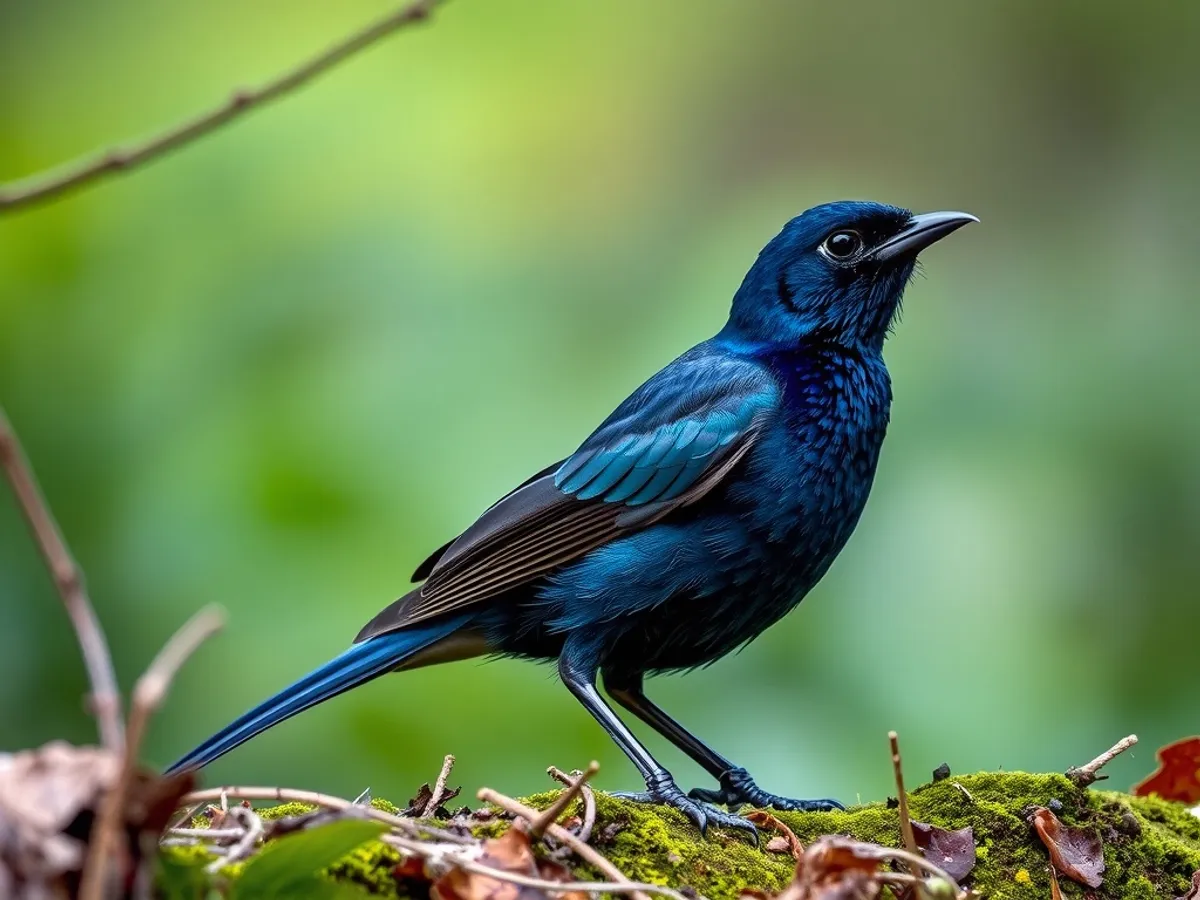
Violet-backed Starling
Cinnyricinclus leucogaster
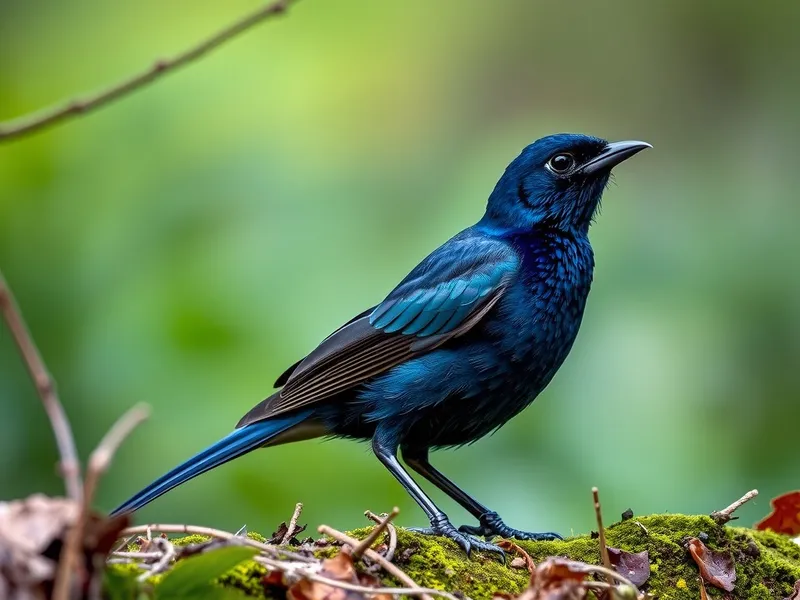
Meet the Violet-backed Starling
The Violet-backed Starling, also known as the Plum-colored Starling, is a small, vividly colored bird native to sub-Saharan Africa. Males are easily recognized by their striking iridescent violet plumage and stark white underparts, while females are brown and heavily streaked, providing excellent camouflage. These birds inhabit open woodlands, savannas, and forest edges, often forming small flocks outside of the breeding season. They are agile fliers and are known for their melodious, whistling calls. The species is migratory in parts of its range, moving seasonally in response to rainfall and food availability.
Classification
Bird
Habitat
Open woodland and forest edges
Diet
Omnivore
Lifespan
5-8 years
Conservation
Least Concern
Weight
34-44 grams
📖Fascinating Facts
Dazzling Plumage
The male's plumage is one of the most vibrantly colored among African starlings, shimmering from deep violet to purple depending on the light.
Cavity Nesters
Violet-backed Starlings often use natural tree cavities or abandoned nests of other birds for breeding, laying 2-4 pale blue eggs.
Wide Range
This species is distributed across much of sub-Saharan Africa, from Senegal and Ethiopia southwards to northern South Africa.
📋Detailed Description
The Violet-backed Starling (Cinnyricinclus leucogaster) is a small, sexually dimorphic passerine, measuring approximately 16–17 cm in length and weighing 28–34 grams. Males are distinguished by their brilliant, iridescent violet or amethyst upperparts, head, and wings, contrasted sharply by pure white underparts, while females exhibit a more cryptic brown and cream streaked plumage, aiding in camouflage during nesting. The species possesses a relatively short, straight bill adapted for a varied diet, and strong legs suited for perching and agile movement among branches. Their eyes are dark with a subtle orbital ring, and both sexes have short, squared tails. Violet-backed Starlings are highly arboreal, rarely descending to the ground, and are most often seen foraging in the canopy or mid-story. They exhibit strong, direct flight with rapid wingbeats, and are known for their melodious, whistling calls, often delivered from prominent perches. Outside the breeding season, they may form loose flocks, sometimes mixing with other starling species. Their distribution spans sub-Saharan Africa, from Senegal and Ethiopia south to northern Namibia, Botswana, and Mozambique, favoring open woodlands, gallery forests, and forest edges, especially where fruiting trees are abundant.
💡 Did you know?
Despite their vivid coloration, Violet-backed Starlings are often overlooked in their natural habitat because females blend in so well with their surroundings.
🔬Research & Sources
Wikipedia Summary
The violet-backed starling, also known as the plum-coloured starling or amethyst starling, or Ndambamukula in the Luvenḓa (Venḓa) language, is a relatively small species (17 cm) of starling in the family Sturnidae. It is the only member of the genus Cinnyricinclus. This strongly sexually dimorphic species is found widely in the woodlands and savannah forest edges of mainland sub-Saharan Africa. It is rarely seen on the ground, but instead found in trees and other locations away from the ground.
Last Modified: 3/28/2025
🎭Behavior & Social Structure
Violet-backed Starlings are diurnal and highly active, spending much of the day foraging in the upper canopy. Their diet is omnivorous, consisting primarily of fruits (notably figs and berries), supplemented by insects such as beetles, caterpillars, and termites, which they glean from foliage or capture in short aerial sallies. They exhibit opportunistic feeding, sometimes following army ant swarms to catch disturbed insects. Socially, they are generally seen in pairs or small family groups during the breeding season, but may aggregate into larger flocks of up to 30 individuals outside of it. Their vocal repertoire includes a series of melodious whistles, trills, and chatters, used for territory defense and mate attraction. They are vigilant and wary, often perching high to survey their surroundings and quickly retreating into cover if threatened. Roosting occurs communally in dense foliage or thickets.
👶Reproduction & Life Cycle
Breeding occurs primarily during the rainy season, which varies geographically but generally falls between September and March in southern Africa. The species is socially monogamous, with pairs forming at the onset of the breeding season. Courtship involves males displaying their iridescent plumage and singing from exposed perches. Nests are typically constructed in natural tree cavities or abandoned woodpecker holes, lined with grass, leaves, and feathers. Clutch size ranges from 2 to 4 pale blue or greenish eggs, which are incubated solely by the female for 12–14 days. After hatching, both parents participate in feeding the chicks, which fledge at around 18–21 days post-hatching. Fledglings remain dependent on parental care for a further 1–2 weeks. The species may raise two broods per season if conditions are favorable.
🛡️Adaptations & Survival
Violet-backed Starlings exhibit several adaptations for arboreal life, including strong, grasping feet for perching and a bill shape that accommodates both fruit and insect prey. Their iridescent plumage in males serves as a sexual signal, likely driven by female choice, while the cryptic coloration of females provides camouflage during incubation and brooding. Their vocalizations are adapted for long-distance communication in dense foliage. The species is partially migratory or nomadic in response to seasonal food availability, particularly in the southern and eastern parts of its range. Their ability to exploit both fruit and invertebrate resources allows them to persist in a variety of woodland habitats.
📚Research Sources
🎨Cultural Significance
In some African cultures, the Violet-backed Starling is appreciated for its striking appearance and melodious song, often regarded as a symbol of beauty or renewal in local folklore. Its name, Ndambamukula in the Luvenḓa (Venḓa) language, reflects its recognition in regional vernaculars. There are no significant traditional uses or widespread symbolic associations documented, but its presence in rural landscapes is sometimes considered an indicator of healthy woodland ecosystems.
🔬Recent Research & Discoveries
Recent research has focused on the evolutionary significance of sexual dimorphism in this species, with studies suggesting that the male's iridescent coloration is a product of both sexual and natural selection. Molecular phylogenetic analyses confirm that Cinnyricinclus is a monotypic genus, with C. leucogaster as its sole representative. Ongoing studies are examining the species' migratory patterns using stable isotope analysis and geolocator tagging, revealing complex seasonal movements in response to rainfall and fruiting phenology. There is also interest in the species' role in seed dispersal and its interactions with other frugivorous birds in African woodland ecosystems.
🎥Wildlife Videos
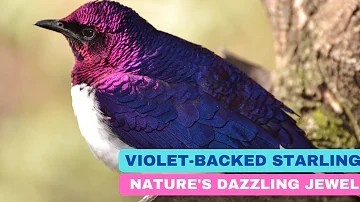
Violet-Backed Starling: Nature's Dazzling Jewel
The avian world is abundant with color, spectacle, and wonder. Among its vibrant inhabitants, the Violet-backed Starling stands ...
Sweet Nature Vibes - Animals

Stunning African Violet-Backed Starling is absolutely lit
The African violet-backed starling is one of the most gorgeous iridescent birds there is. A member of the glossy starling family its ...
Hyenas etcetera

Violet-backed Starling (Cinnyricinclus leucogaster) males, iMfolozi (South Africa) 25-11-2022
Tom's video's of birds, fishes, landscapes & more
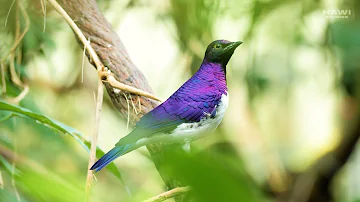
Violet Backed Starling in Forest #forest #bird #wildlife #violet #starling #nature #beauty HA46263
HAWI Studios
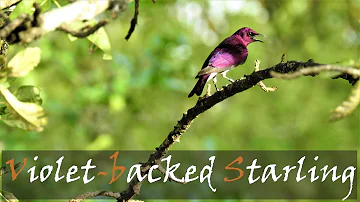
Violet-backed Starling (Cinnyricinclus leucogaster) Bird Call | Kruger Birds | Stories Of The Kruger
Violet-backed Starling (Cinnyricinclus leucogaster) Bird Call | Plum-coloured Starling The Violet-backed Starling (Cinnyricinclus ...
Stories Of The Kruger
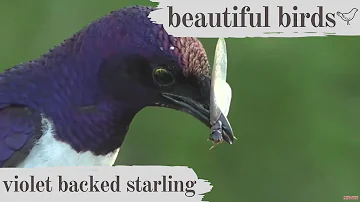
Beautiful Birds - Violet Backed Starling with Tristan
Beautiful Birds - Violet Backed Starling with Tristan, see on sunset 21st Jan 2010 with Seb on camera. Djuma private game ...
MrsZero
🌍Habitat Information
The Violet-backed Starling typically inhabits Open woodland and forest edges environments. Violet-backed Starlings have adapted to their environments with specialized features and behaviors.
Primary Habitat:
Open woodland and forest edges
More detailed habitat information will be available soon.
🛡️Conservation Status
The Violet-backed Starling is currently classified as Least Concern. Conservation efforts are crucial for preserving this species for future generations.
Common Threats:
- 🏠Habitat loss and fragmentation
- 🌡️Climate change impacts
- 🎯Hunting and poaching
- 🏭Human-wildlife conflict
⚠️Threats & Conservation Challenges
Currently assessed as Least Concern by the IUCN, the Violet-backed Starling maintains stable populations across much of its range. However, localized declines may occur due to habitat loss from deforestation, agricultural expansion, and urbanization. The species is sensitive to the removal of large trees, which provide essential nesting sites. Pesticide use may reduce insect prey availability. Despite these pressures, the species' wide distribution, adaptability to secondary habitats, and generalist diet buffer it against major population declines at present.
🔬Scientific Classification
Scientific Name
Cinnyricinclus leucogaster
Classification Hierarchy
🔍 About Taxonomic Classification
Taxonomic classification is a hierarchical system used by scientists to classify and organize living organisms based on shared characteristics and evolutionary relationships.
The system moves from broad categories (Kingdom) to increasingly specific ones, with each animal's scientific name typically consisting of its Genus and species.
📝Community Notes
Share your observations and insights about the Violet-backed Starling with our community of wildlife enthusiasts.
Join Our Community
Sign in to share your observations and connect with fellow wildlife enthusiasts.
Sign In to ContributeNo community notes yet
Be the first to share your observations about the Violet-backed Starling!
Explore Violet-backed Starling
Select a tab above to learn more about this amazing animal.
📸Photo Gallery
No photos available for this animal yet.
🌟Discover More Wildlife
Continue your journey of discovery with more fascinating animals from our database
